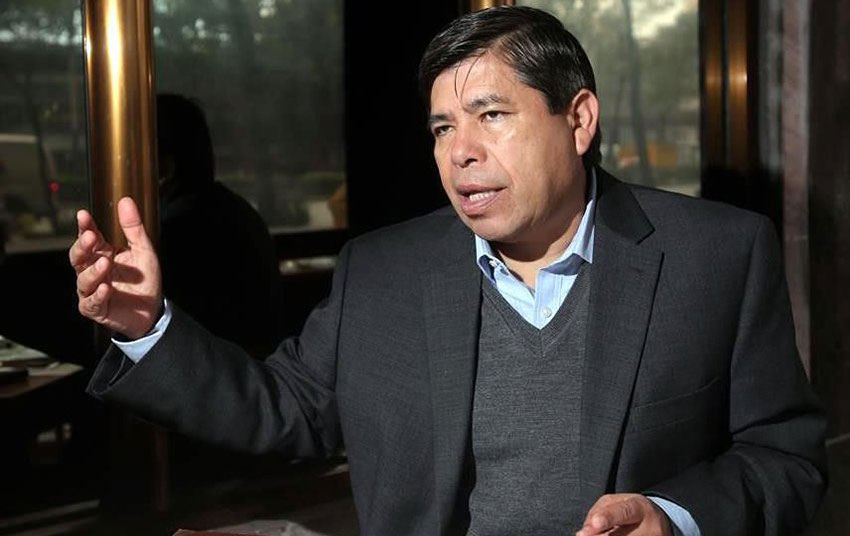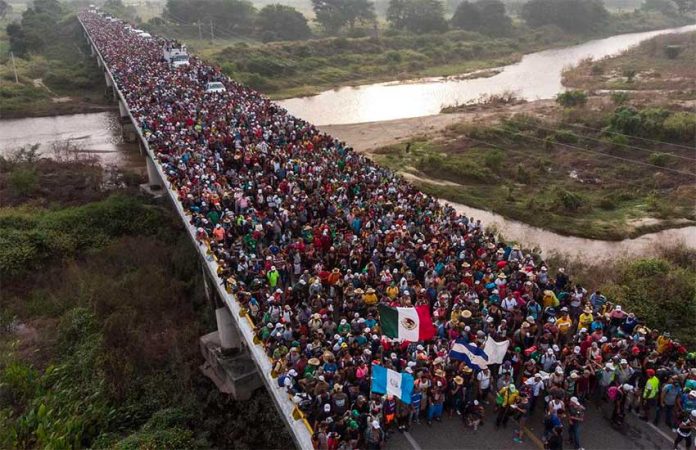While the United States was pressuring Mexico to reduce migration, the Mexican government diverted resources from a regional development fund to transport migrants away from the northern border and to spruce up detention centers.
The Associated Press reported Tuesday that information it obtained through public records requests shows that the federal government last year allocated more than US $4 million from the Infrastructure Fund for Mesoamerican and Caribbean Countries – commonly known as the Mexico Fund – to immigration containment.
Documents provided by the Ministry of Foreign Affairs (SRE) said the Mexican International Cooperation Agency for Development sent about US $3.3 million from the fund to detention centers in July 2019 and that more than $700,000 was used to transport asylum seekers away from the northern border.
The diversion of funds came just months after United States President Donald Trump threatened to impose blanket tariffs on Mexican imports if Mexico didn’t do more to stop migrants reaching the U.S.
Mexico avoided the imposition of the tariffs after reaching a deal with the United States in June last year under which it agreed to deploy the National Guard to stem the flow of migrants and consented to an expansion of the U.S. government’s so-called “Remain in Mexico” policy that sends asylum seekers back to Mexico to await the outcome of their claims.
The Associated Press (AP) reported that “unnoticed at the time” was an adjustment the Mexican government made in June 2019 to the Mexico Fund, whose resources were used to support development projects in Central America and Caribbean nations.
The López Obrador administration said in a decree that the fund “required a new vision that allows for better use of resources” and that it could be used for the “registration, control and tracking” of migrants and to carry out projects at migrant detention centers.
Asked about the changes to the fund’s goals and whether pressure from the United States was a factor, the SRE initially only provided AP a list of improvements that have been made to detention centers and told the news agency that the amount diverted was “very small,” accounting for less than 4% of the fund’s total resources.
However, after AP published its report the SRE said in a letter that “our immigration policy, like our foreign policy, is determined exclusively by the Mexican government … not by the United States nor any other country.”
But the former head of the National Immigration Institute (INM), who resigned a week after Mexico agreed to step up enforcement against migrants, told AP that the diversion of the Mexico Fund resources amounted to a “dramatic turnaround” from the fund’s mission.
Tonatiuh Guillén said the diversion is testament to what happened after Trump threatened to impose tariffs on Mexican products.

“[There was] a recomposition of the immigration vision completely oriented toward containment that leaves us without tools and resources to design development strategies, which had been the government’s objective,” he said.
Prior to Trump’s tariff threat, the government was considerably more amicable to migrants, granting 15,000 humanitarian visas in just three months at the start of President López Obrador’s administration.
But after the pact that staved off the tariffs was reached, members of the National Guard were deployed to anti-migration operations on Mexico’s southern and northern borders, and stopped thousands of migrants from traveling through the country.
In addition, Mexico’s prisons director became the head of the INM, deportations increased and “border cities, already plagued by cartel violence, filled with some 60,000 asylum seekers returned by the U.S. to wait out a process that lasts months and sometimes years,” AP said.
It is unclear how many migrants were bused away from Mexican border cities but the SRE said earlier this year that more than half of asylum seekers waiting for their cases to be resolved had decided voluntarily to return to their countries of origin.
In April, the Mexican government again used more than $700,000 from the Mexico Fund to transport migrants from the northern border to the southern border with Guatemala. Many were left stranded because the Mexico-Guatemala border was closed due to the coronavirus pandemic.
Maureen Meyer, vice president for programs and director for Mexico at the Washington Office on Latin America, said the Mexican government is “inviting people to self-deport” without explaining the consequences such a move has on their claims for asylum.
She also said “the fact that the Mexican government diverted funding designated to address the economic push factors driving migration to the U.S. in favor of moving asylum-seekers away from Mexico’s northern … border, and to improve conditions in Mexico’s detention centers, is a clear sign of how the López Obrador administration has shifted its migration priorities in response to the demands of the Trump administration.”
Guillén, the ex-immigration chief, said that “it is clear that the original objective of … [the Mexico Fund] was distorted.”
López Obrador held talks with Trump in July at the White House, where the latter said that the United States had been “helped greatly by Mexico in creating record numbers in a positive sense on our southern border.”
His remark presumably referred to the deployment of the National Guard in Mexico to block migrants’ path to the U.S.
For his part, López Obrador said that Trump has treated Mexico with respect since he took office in late 2018 and asserted that the U.S. president has never tried to “impose” anything on Mexico that violates the country’s sovereignty.
Source: AP (en)
